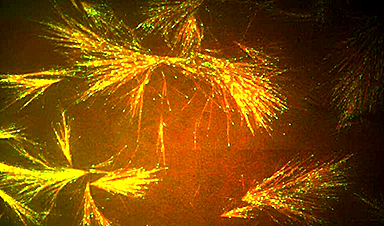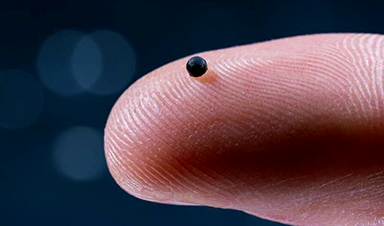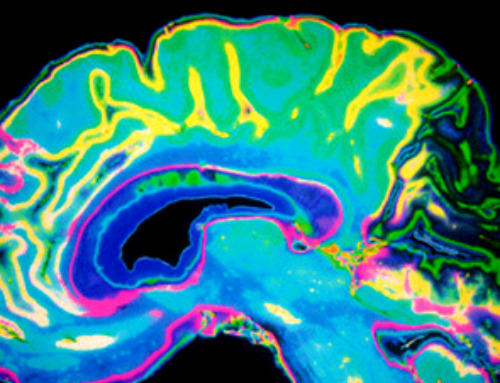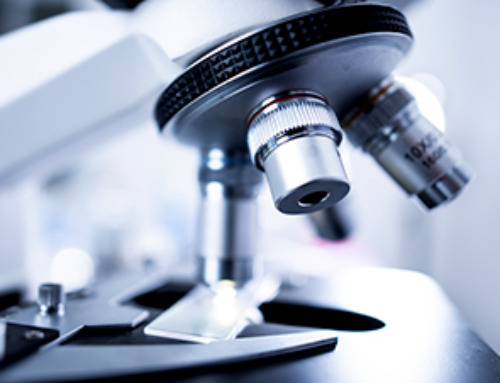Princeton researchers have learned to harness the gossamer scaffolding that maintains the structure of living cells and used it to develop a nanotechnology platform. The technique eventually could lead to advances in soft robotics, new medicines, and the development of synthetic systems for high-precision biomolecular transport.
Inside cells, tubulin proteins form long, incredibly thin rods called microtubules. Networks of microtubules grow like tree roots into branching systems that form a primary element of the cytoskeleton, which gives cells their shape and enables them to divide.
Besides helping to maintain a cell’s shape, the microtubular scaffolding also works like a molecular railway. Specialized motor proteins carry molecular loads along the microtubule filaments. Slight changes in the microtubules’ molecular makeup act like signposts to adjust the chemical carriers’ courses, sending molecular payloads to their destinations.
At Princeton, questions about these intracellular networks led to a collaboration between Sabine Petry, an associate professor of molecular biology, and Howard Stone, a professor of mechanical and aerospace engineering who specializes in fluid mechanics.
“The biological systems we were inspired by were axons,” said Meisam Zaferani, one of the lead researchers. “Axons are long protrusions coming out of a neuron that allow for directed molecular transport.”
In the nervous system, microtubule networks work both as structures connecting nerve cells and as a means for the nervous system to transmit chemical signals that produce sensation. Zaferani said scientists are still working to understand elements of microtubule growth and chemical properties. But he said the research team wanted to know if they could harness the networks for practical applications.
“Engineers and physicists have started to study microtubules as components to build novel materials and technologies,” he said. “There are many mysteries about their fundamental properties, but we know enough to start to think about how we could engineer these systems.”
With co-researcher Ryungeun Song, Zaferani worked to create a system to control the growth of microtubules in the cleanroom labs at the Princeton Materials Institute.
Using specialized equipment in micro/nanofabrication and microfluidics, the researchers precisely controlled the growth of the microtubule branches. They were able to adjust the angle and direction of growth and were able to create microstructures in which growth direction of microtubules was regulated.
Zaferani said the Materials Institute offered a unique mix of equipment and expertise that would be difficult to find anywhere else.
The researchers plan to follow up by directing chemical cargo along the microtubule branches. The goal is to build a controllable chemical transport system. In a related effort, they are also examining the use of microtubule networks as a tool like microtweezers that exert physical force on incredibly tiny objects.
Petry’s research group has long collaborated with Stone, the Donald R. Dixon ’69 and Elizabeth W. Dixon Professor of Mechanical and Aerospace Engineering, at the intersection of biology and fluid dynamics. They hired Song, a mechanical engineer who had focused on microfluidics in his graduate work; and Zaferani, a biophysicist who had studied the cues that help mammalian sperm cells navigate toward an egg.
Stone, who frequently collaborates with colleagues in engineering and the natural sciences, said mixing expertise from varied disciplines often leads to remarkable results.
“I find it very interesting to find problems that involve fluid mechanics in other fields,” he said. “Often I find a topic that is poorly understood to the scientists on the other side and poorly understood by myself, and together we work to figure it out.”
More information: Meisam Zaferani et al, Building on-chip cytoskeletal circuits via branched microtubule networks, Proceedings of the National Academy of Sciences (2024). DOI: 10.1073/pnas.2315992121
Journal information: Proceedings of the National Academy of Sciences
News
A single shot of HPV vaccine may be enough to fight cervical cancer, study finds
WASHINGTON -- A single HPV vaccination appears just as effective as two doses at preventing the viral infection that causes cervical cancer, researchers reported Wednesday. HPV, or human papillomavirus, is very common and spread [...]
New technique overcomes technological barrier in 3D brain imaging
Scientists at the Swiss Light Source SLS have succeeded in mapping a piece of brain tissue in 3D at unprecedented resolution using X-rays, non-destructively. The breakthrough overcomes a long-standing technological barrier that had limited [...]
Scientists Uncover Hidden Blood Pattern in Long COVID
Researchers found persistent microclot and NET structures in Long COVID blood that may explain long-lasting symptoms. Researchers examining Long COVID have identified a structural connection between circulating microclots and neutrophil extracellular traps (NETs). The [...]
This Cellular Trick Helps Cancer Spread, but Could Also Stop It
Groups of normal cbiells can sense far into their surroundings, helping explain cancer cell migration. Understanding this ability could lead to new ways to limit tumor spread. The tale of the princess and the [...]
New mRNA therapy targets drug-resistant pneumonia
Bacteria that multiply on surfaces are a major headache in health care when they gain a foothold on, for example, implants or in catheters. Researchers at Chalmers University of Technology in Sweden have found [...]
Current Heart Health Guidelines Are Failing To Catch a Deadly Genetic Killer
New research reveals that standard screening misses most people with a common inherited cholesterol disorder. A Mayo Clinic study reports that current genetic screening guidelines overlook most people who have familial hypercholesterolemia, an inherited disorder that [...]
Scientists Identify the Evolutionary “Purpose” of Consciousness
Summary: Researchers at Ruhr University Bochum explore why consciousness evolved and why different species developed it in distinct ways. By comparing humans with birds, they show that complex awareness may arise through different neural architectures yet [...]
Novel mRNA therapy curbs antibiotic-resistant infections in preclinical lung models
Researchers at the Icahn School of Medicine at Mount Sinai and collaborators have reported early success with a novel mRNA-based therapy designed to combat antibiotic-resistant bacteria. The findings, published in Nature Biotechnology, show that in [...]
New skin-permeable polymer delivers insulin without needles
A breakthrough zwitterionic polymer slips through the skin’s toughest barriers, carrying insulin deep into tissue and normalizing blood sugar, offering patients a painless alternative to daily injections. A recent study published in the journal Nature examines [...]
Multifunctional Nanogels: A Breakthrough in Antibacterial Strategies
Antibiotic resistance is a growing concern - from human health to crop survival. A new study successfully uses nanogels to target and almost entirely inhibit the bacteria P. Aeruginosa. Recently published in Angewandte Chemie, the study [...]
Nanoflowers rejuvenate old and damaged human cells by replacing their mitochondria
Biomedical researchers at Texas A&M University may have discovered a way to stop or even reverse the decline of cellular energy production—a finding that could have revolutionary effects across medicine. Dr. Akhilesh K. Gaharwar [...]
The Stunning New Push to Protect the Invisible 99% of Life
Scientists worldwide have joined forces to build the first-ever roadmap for conserving Earth’s vast invisible majority—microbes. Their new IUCN Specialist Group reframes conservation by elevating microbial life to the same urgency as plants and [...]
Scientists Find a Way to Help the Brain Clear Alzheimer’s Plaques Naturally
Scientists have discovered that the brain may have a built-in way to fight Alzheimer’s. By activating a protein called Sox9, researchers were able to switch on star-shaped brain cells known as astrocytes and turn them into [...]
Vision can be rebooted in adults with amblyopia, study suggests
Temporarily anesthetizing the retina briefly reverts the activity of the visual system to that observed in early development and enables growth of responses to the amblyopic eye, new research shows. In the common vision [...]
Ultrasound-activated Nanoparticles Kill Liver Cancer and Activate Immune System
A new ultrasound-guided nanotherapy wipes out liver tumors while training the immune system to keep them from coming back. The study, published in Nano Today, introduces a biodegradable nanoparticle system that combines sonodynamic therapy and cell [...]
Magnetic nanoparticles that successfully navigate complex blood vessels may be ready for clinical trials
Every year, 12 million people worldwide suffer a stroke; many die or are permanently impaired. Currently, drugs are administered to dissolve the thrombus that blocks the blood vessel. These drugs spread throughout the entire [...]





















